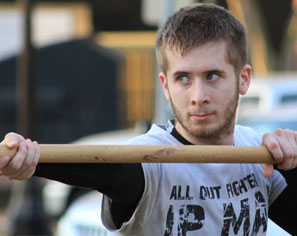Everyone’s physical capabilities are different, whether it be size, strength, speed, or overall fitness level. There are strengths and limitations each of us has compared to the next person. So it’s important when searching for self defense programs to take these differences into consideration. How do you find the right program? Choosing self defense programs, and some red flags to keep an eye on.
Do the self defense program focus on real world applications or “the art”?
This is the biggest distinction from one martial arts school to the next. Especially when it comes to self defense in particular. Many martial art schools focus on what people commonly know as training for “the art” or “philosophy” of martial arts.


This is appropriate for students looking for mental wellness and even to increase their fitness. Not for those seeking real world self defense applications. Gyms that focus on “the art” tend to heavily focus on forms. Choreographed attacks, individual training (not against or with partners), and the theory behind the martial arts.
Discover the Best Self-Defense Programs Near You Today!
Those interested in real-world fighting applications and self defense techniques. To find what you can actually use, there are a few indicators to look out for. The biggest one is do they encourage sparring, and does the sparring actually utilize the techniques the instructors are teaching?


Many times people default to basic boxing or MMA techniques when in a sparring scenario. That’s useful, but do they teach those techniques in the program?
How to Choose the Right Self-Defense Program for Your Needs
Usually a good indicator that the self defense training is quality stuff. It’s actively used in sparring sessions, which then translates to use “IRL” if a student ever needs it in a real fight. The key is muscle memory. Does the program teach techniques that become instinctual and usable when in real-world fighting scenarios.


Another thing to look out for is versatility. This means, does the program focus on training for multiple scenarios? Does the self defense program focus on a single vs multiple attackers? What should you do if you’re grabbed or shoved? Does it prepare students for what to do when faced with an attacker who has a knife or a gun?
All of these scenarios are very common in fights. Any self defense programs you decide to go with offers versatility and mixes up the training regime. To make sure students are confident and well-rounded enough to tackle whatever may come their way.

What measures ensure safety and prevent injury in the self-defense program?
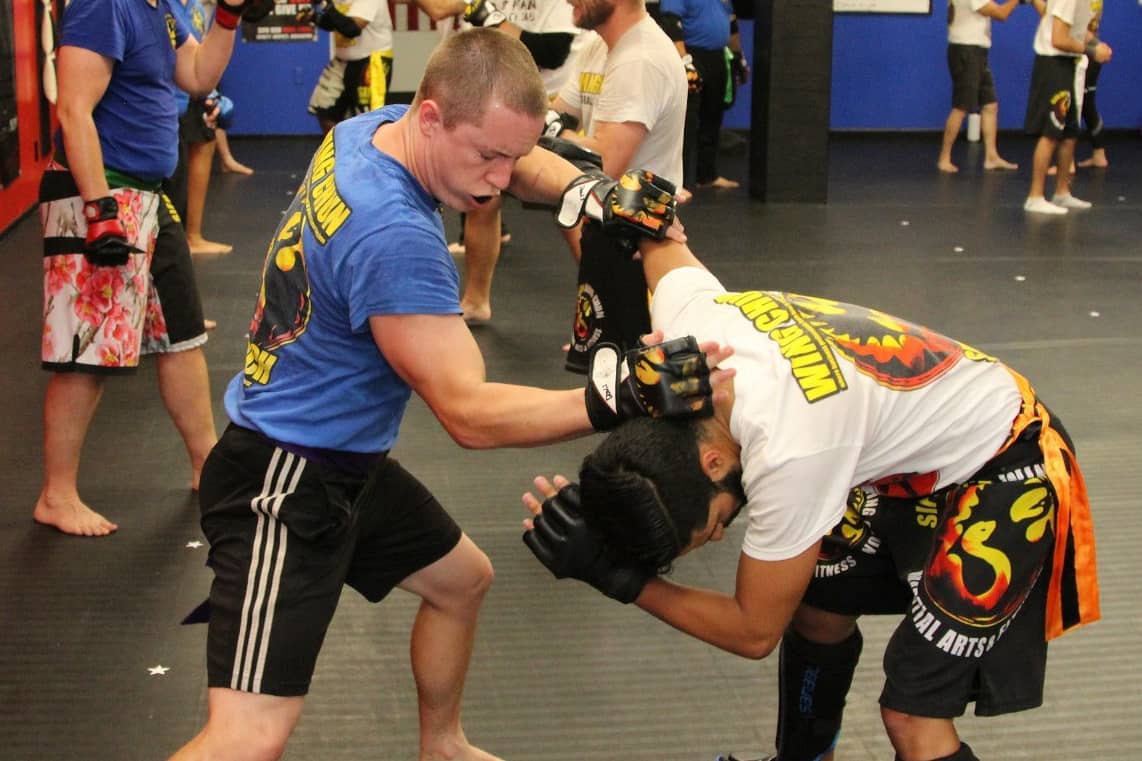
Training practical skills for self defense can be dangerous. While most instances won’t be especially harrowing. It’s important to recognize that any self defense training program does come with its own sets of risks and potential to cause injury. When searching for self defense classes near you. It’s important that the instructors know how to keep people safe.
They put measures in place to keep students from injuring themselves or each other.
Is safety gear required when sparring or facing an opponent in class? Common pieces of equipment include padded gloves, mouthpieces, helmets, shin guards, arm guards, and chest guards.


This will change depending on the type of program you join. The basics (gloves and mouth-pieces) are a bare minimum must-have when training in self defense.
Master Self-Defense: Find the Best Classes Near You
Do instructors moderate and monitor fight training to make sure the focus is on building skill? Oftentimes sparring can devolve into “beating” the opponent by any means necessary. This mentality usually creates bad and dangerous habits. It’s important that an instructor moderates training sessions to make sure attacks are gratuitously hard, hazardous, or incorrectly utilized. This is not only to teach good habits/skills but to prevent students from injuring themselves or each other. When looking for a self defense program near you. Make sure the instructor(s) are active on the training floor at all times.

Are there students who have been training for more than a year?
This is generally just a green flag to look out for. Similar to a job, if there’s a high turnover rate of people, that’s usually a sign that something is wrong. When finding a self defense program near you. Take the opportunity to check the place out prior to joining. Watch a class, or join a trial period to learn about the training environment. See how instructors teach, and more importantly, talk to other students.
See what they have to say about their training journey. About other students, how the instructors have taught them. You could even get training tips. A sign of a good teacher is when students have the ability and willingness to teach those junior to them.

If someone has been training at a place for more than a year. They should have acquired enough skill in self defense to be able to actually use the techniques. They’ve been taught and are well past the “basics” stage. This can be a good way to gauge on where your skill level might be. If you decide to stick with that program and provide you with a nice aspirational goal to work towards.
Are the instructors approachable and willing to answer your questions?
While the social aspect isn’t a make or break quality for good self defense classes. It’s important that an instructor be willing to answer your questions and address concerns. Do they feel approachable and non-judgmental? Are they patient and showcase a desire to really answer your questions?


Like learning any skill, there will be times where you’ll get stuck, frustrated, or struggle. With a particular technique and it’s important that you feel comfortable talking to your instructor not only in regards to training.
Your overall health and wellness since these are aspects very closely intertwined with self defense training. A good instructor will not only recommend things to improve your self defense skills. Many are also well versed in overall fitness training, food & diet programs, recovery/injury management, and all things fitness related.

Do you feel comfortable training with the other students?
While the quality of the training program is the top priority, the social atmosphere is a close second. It’s important that you feel relaxed, comfortable, and open. To engaging with the students on the training floor as they’ll be a great resource for working through similar struggles. Overall just a great sense of camaraderie.

Why Local Self-Defense Programs Matter: Find Yours Now
The gym, and any sort of fitness class can be intimidating to start, so knowing that the people you’ll be training with are open and judgment free can go a long way in making your training journey a lot smoother and stress free. Depending on their own training journeys, your fellow students could be a great resource in overcoming issues, techniques you might be struggling with, fitness hurdles, or even just a buddy to hit the gym with.
A good gym/martial arts studio will foster a social atmosphere that encourages connection and removes ego from the training process. When looking for a good self defense program near you, see how the students interact with each other, and with new/potential students just coming into class. The social environment will be a good indicator on the potential longevity for you training in a particular place.
Find the Best Self-Defense Training: Options Near You!
While these aren’t the end-all-be-all signs to look for, it is important to keep some of these questions in mind when looking for self defense programs near you. There are many gyms out there looking to make a quick buck, or martial art studios that don’t focus on real-world applications, so it’s important to find a balance when choosing the right program for you.
If you’re interested in getting started, we here at Sifu Och Wing Chun offer self defense training, kickboxing & fitness, for kids and adults. We know it’s important to make sure the training program is a good fit, so feel free to get in touch and get started with our limited 2-week trial offer. We hope to be the place you call home for your fitness and self defense training journey.










 The first thing that must be done is to establish a line of discipline with the student’s. Without discipline there will be utter chaos in the class. No matter how fun the class is there will always be some sort of disruption. In my article
The first thing that must be done is to establish a line of discipline with the student’s. Without discipline there will be utter chaos in the class. No matter how fun the class is there will always be some sort of disruption. In my article 











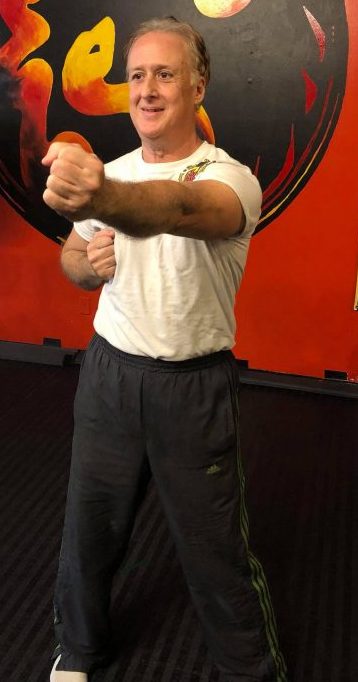
 If anybody is in the 40s or 50s age and would like to learn some self-defense they should not hesitate. They should come down to Sifu Och and start their own journey! Your age shouldn’t hold you back. I’m 58 but that is just a number. I don’t allow that to be an excuse to not learn something new. Life can be very hard. And many times you want to just give up. But the wonderful things in life take some time to learn.
If anybody is in the 40s or 50s age and would like to learn some self-defense they should not hesitate. They should come down to Sifu Och and start their own journey! Your age shouldn’t hold you back. I’m 58 but that is just a number. I don’t allow that to be an excuse to not learn something new. Life can be very hard. And many times you want to just give up. But the wonderful things in life take some time to learn. Sal shows that now matter your age you can accomplish anything with hard. Day after day Sal comes into class and puts in a hard days training. Starting from private lessons he has been able to work himself into the group classes. The most impressive thing about Sal is his determination. He doesn’t care about belts, or awards, or flashy techniques. He simply wants to know that he can take care of himself. Each day he comes in and builds himself from the last class.
Sal shows that now matter your age you can accomplish anything with hard. Day after day Sal comes into class and puts in a hard days training. Starting from private lessons he has been able to work himself into the group classes. The most impressive thing about Sal is his determination. He doesn’t care about belts, or awards, or flashy techniques. He simply wants to know that he can take care of himself. Each day he comes in and builds himself from the last class.









































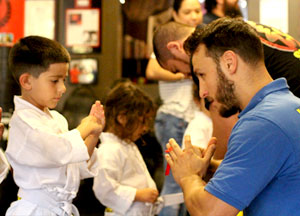









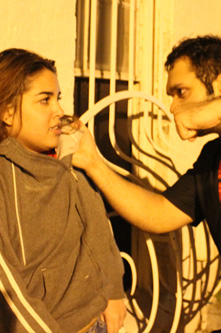 “
“ When its
When its 




